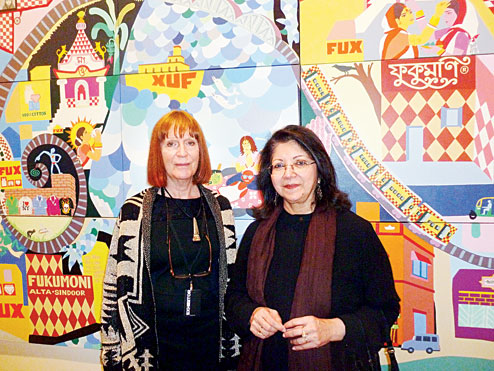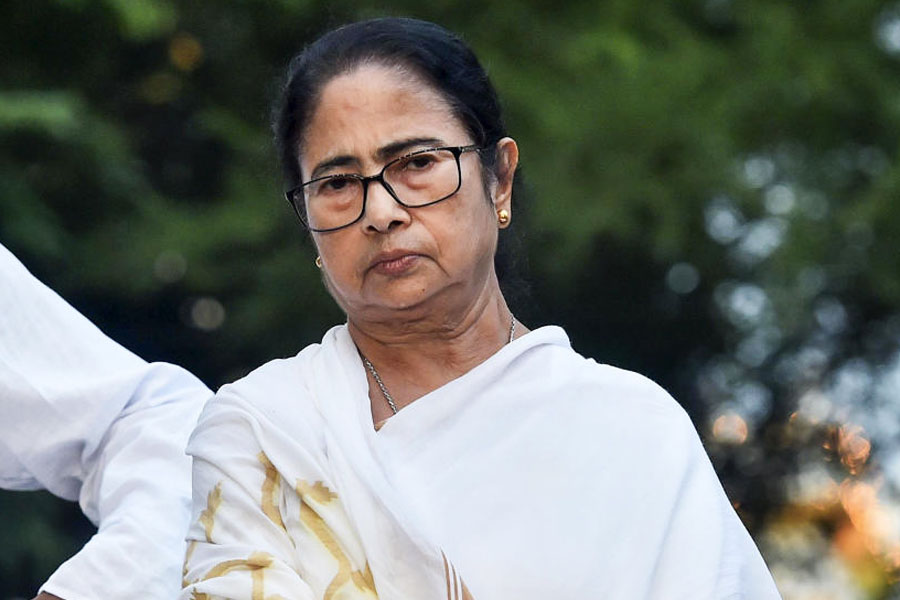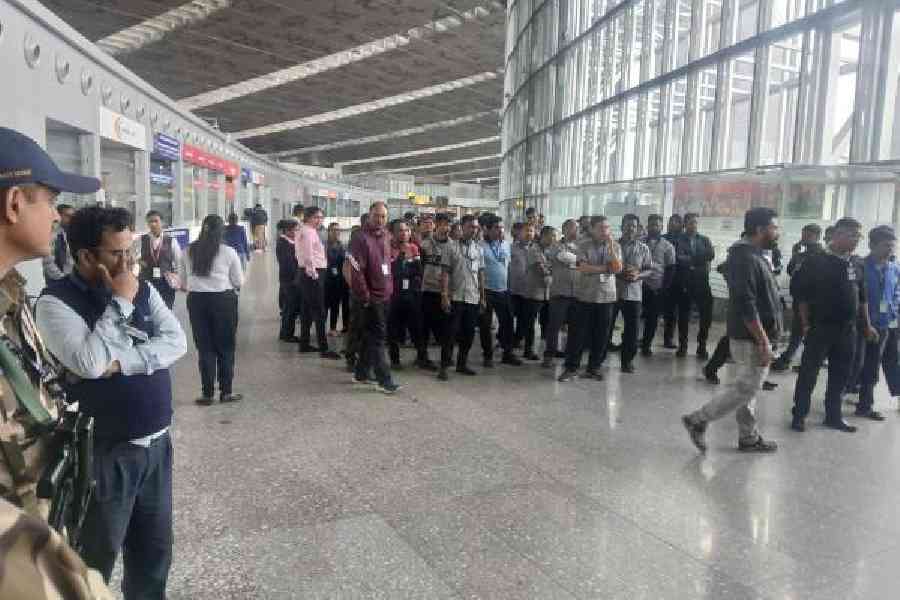A new play about the Partition of India, written by Howard Brenton, a well-known British playwright, and directed by Howard Davies, will almost certainly provoke both Indians and Pakistanis.
Drawing the Line, which will be staged at Hampstead Theatre (part of my beat in my early reporting days on a local paper in north London) from December 3, 2013, to January 11, 2014, tells of how a British judge, Cyril Radcliffe, quickly drew lines on a map of India to carve out Pakistan.
Brenton has revealed he got the idea during his first trip to India in 2009. In Kerala, he met a Hindu shopkeeper whose family had fled Kashmir in 1947.
Brenton says, 'Back in England I asked: 'So how was the border drawn?' The answer was extraordinary. It was done by Judge Cyril Radcliffe, who knew nothing about India and nothing about maps. ...Radcliffe was sent by the then Labour Prime Minister, Clement Atlee, to do the job in six weeks, with the date of British withdrawal fixed.'
The Holocaust clearly appalled Radcliffe who 'refused to accept his fee and burnt all the papers about the drawing of the border in his garden and, throughout a long and eminent career, never spoke a word about his experience in India'.
The main characters in the drama include Lord and Lady Mountbatten, Radcliffe, Nehru, Gandhi and Jinnah whom Brenton has 'long admired'.
The late Paul Bhattacharya would have been perfect as Jinnah. There are a number of candidates for Nehru though Madhav Sharma is probably the most talented and best spoken Indian actor in the country.
When the Indian Journalists' Association launched a book on the late Nawab of Pataudi at Lord's in June, Madhav was the one picked to read extracts from the book.
In a way, the play has contemporary relevance because Britain has an increasingly fraught relationship with Pakistan and radical British-born Pakistanis.
We need suitably patrician actors to play the Mountbattens, though I do hope Edwina won't be shown 'doing it' with Nehru.
Gandhi's mind
We move from the British version of Indian history to some actual historical document, including a draft of Gandhi's will drawn up in 1926 by the Mahatma himself and superceding a previous one from 1921.
A treasure trove of Mahatma memorabilia is to be sold on November 5 at Mullock's, a specialist auction house deep in the English countryside in Church Stretton, Shropshire.
Richard Westwood-Brookes, a historical documents expert at Mullock's, has drawn my attention to his catalogue entry for the 1926 will: 'The witnesses to the document are Kishorelal Ghanshyamlal Mashruwala and Chhotelal Jain. ...according to a note from our vendor (in India) the present document was drawn up as an initial draft which was then the subject of considerable consultation by Gandhi's circle. This led to several corrections which appear on the document in Gandhi's hand with attestation by witnesses.'
It is just as well for the auction houses like Mullock's that the Mahatma did not rely on email and text messaging.
Young Bengal
-

Art meet: Rakhi Sarkar (right) and Griselda Bear in front of Sumitro Basak's Till death do us part
Four works by three Bengal artists — Sumitro Basak, 38, Shreyasi Chatterjee, 53, and Kingshuk Sarkar, 41 — have just been shown at the spacious Saatchi art gallery in London as part of a new art fair called Startra.
The independent curator who made the selection, Griselda Bear, said that when she visited Calcutta over five years ago during the Pujas, she knew 'there was something special about Calcutta'.
'I thought of it a bit as the Paris of India where Paris was the centre of the arts,' added Griselda, who called her choice, 'Kolkata cross-currents'.
'I went to the CIMA gallery and found there was a very important gallery there,' she remembered. 'It had an understanding of the wider world and it was nurturing artists so that they could take their place in the world.'
CIMA's director, Rakhi Sarkar, who described herself as a 'facilitator', said that the three artists had 'studied in Santiniketan and Vishva-Bharati and passed out from Kala Bhavan. There is a lot of Tagore in their works. It is almost reinventing our tradition of miniatures, the narrative, in a modern, universal, global context. All of them were very close to rural India. Tagore wanted people to be rooted in India, at the same time talk about the universe.'
A wit referred to the artists as YBA — Young Bengal Artists instead of Young British Artists.
Perfect Wisden
The publishers of Wisden, which this year brought out the 150th edition of the Cricketers' Almanack, have come up with the perfect book for cricket lovers who happen to get marooned, like Robinson Crusoe, on a desert island.
Two editors, John Stern and Marcus Williams, have combed 133,491 pages of past Wisdens and come up with The Essential Wisden: An Anthology of 150 years of Wisden Cricketers' Almanack (Bloomsbury; �50).
Wisden was first published in 1864 so Messrs Stern and Williams have provided 'a fascinating lens through which to view the history and evolution of the game'.
Sachin Tendulkar's name appears on 37 pages.
Another great Indian, Kumar Shri Ranjitsinhji, merited a positive appraisal, 'Genius underestimated', in 1897. There is a splendid photograph of Prince Ranji in boater and blazer.
Wisden noted that 'if the somewhat too- freely-used word genius can with any propriety be employed in connection with cricket, it surely applies to the young Indian's batting.'
There is a 1968 piece, 'Test Cricket's Youngest Captain', by Dicky Rutnagur on the Nawab of Pataudi, who was appointed Indian skipper at 21. Another article by Rutnagur, 'The Meticulous Craftsman', from 1980, is about Sunil Gavaskar.
Ramachandra Guha contributed 'A Nation Walks with Him' on Tendulkar in 2011.
Dancing girls
-

DISCIPLINED: Indrani Datta
London had several Pujas, one of the biggest being in the Camden Centre, which marked the 50th anniversary of the religious occasion with a special musical dance.
I watched my niece, Sejuti Dasgupta, dance in Camden, where the Puja is efficiently masterminded by its chairman, Ananda Gupta.
Dance is alive and well among Bengalis, thanks to the dedication of women such as Indrani Datta, a banking lawyer by day.
How different, banking law and dancing, I suggested.
'I disagree,' said the feisty lady. 'Both require discipline.'
Tittle tattle
-

Cambridge connect: Meira Kumar with VC Sir Leszek Borysiewicz
Attending the Puja meant I had to skip the dinner hosted by the Indian High Commission for the visiting Speaker, Meira Kumar, as well as the confident address on parliamentary democracy in India she had given earlier in the day in the law faculty in Cambridge.
'I had come here years ago when I was young like you and posted as a diplomat to the India House — I went punting on the Cam,' recalled Meira.
She is also a proud mother because her son, Anshul Avijit, a graduate student, 'is studying here (in Cambridge)'.
She was commendably forthright on one issue: 'The caste system has caused and is continuing to cause unimaginable harm to society. It needs to be destroyed completely and not encouraged to tighten its grip on our electoral system. What has been poison for so long cannot suddenly become the nectar of life.'
Maybe the time has come to consider the wisdom of having reservations of any kind.










